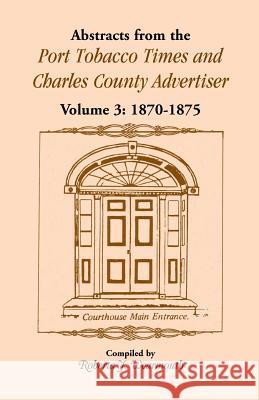Abstracts from the Port Tobacco Times and Charles County Advertiser: Volume 3, 1870-1875 » książka
Abstracts from the Port Tobacco Times and Charles County Advertiser: Volume 3, 1870-1875
ISBN-13: 9781556138782 / Angielski / Miękka / 2013 / 266 str.
Abstracts from the Port Tobacco Times and Charles County Advertiser: Volume 3, 1870-1875
ISBN-13: 9781556138782 / Angielski / Miękka / 2013 / 266 str.
(netto: 120,85 VAT: 5%)
Najniższa cena z 30 dni: 118,94 zł
ok. 13-18 dni roboczych.
Darmowa dostawa!
Volume 3 of the Abstracts re-opens a door long considered or thought shut on the years that saw the beginning of events that led to the destruction of the town of Port Tobacco. Just before Christmas of 1872 the tracks of southern Maryland's first railroad finally reached the sleepy shore of the Potomac River. Studding the right-of-way of the new rail line from the main road seventy miles north appeared almost overnight a series of new stations built hurriedly to support commerce and communications from Huntingtown to Popes Creek on the river. One of them, La Plata Station, sprung up four miles east of Port Tobacco. This single event, more than any other, led to political and commercial bitterness marked by a viciousness that pitted old established families against one another. With each day that went by from then until the last few years of the nineteenth century came increasing demands that La Plata Station displace the two-centuries old community on Port Tobacco Creek as Charles County, Maryland's seat of government. During the period covered by this volume, 1870-1875, while business interests supplied the greatest force for courthouse removal, other factors did play a part. These included deteriorating transportation facilities, health conditions and unfavorable geography. The Maryland Assembly in the 1727 edict demanded the location of the village where it eventually became settled-on the banks of a twisting, turgid stream extremely narrow and vulnerable to spring freshet flooding and unable to support even the traffic of flat-bottomed tenders moving cargo from ship to shore. For the first time in recent years, Volume 3 presents an outline of the first clearly delineated political sub-divisions of Charles County. These were the nine election district areas established by the General Assembly in 1868. Description of the boundaries of these districts gives the reader an interesting and precise look at the general political and geographic make-up of the county as it was just after the Civil War.











